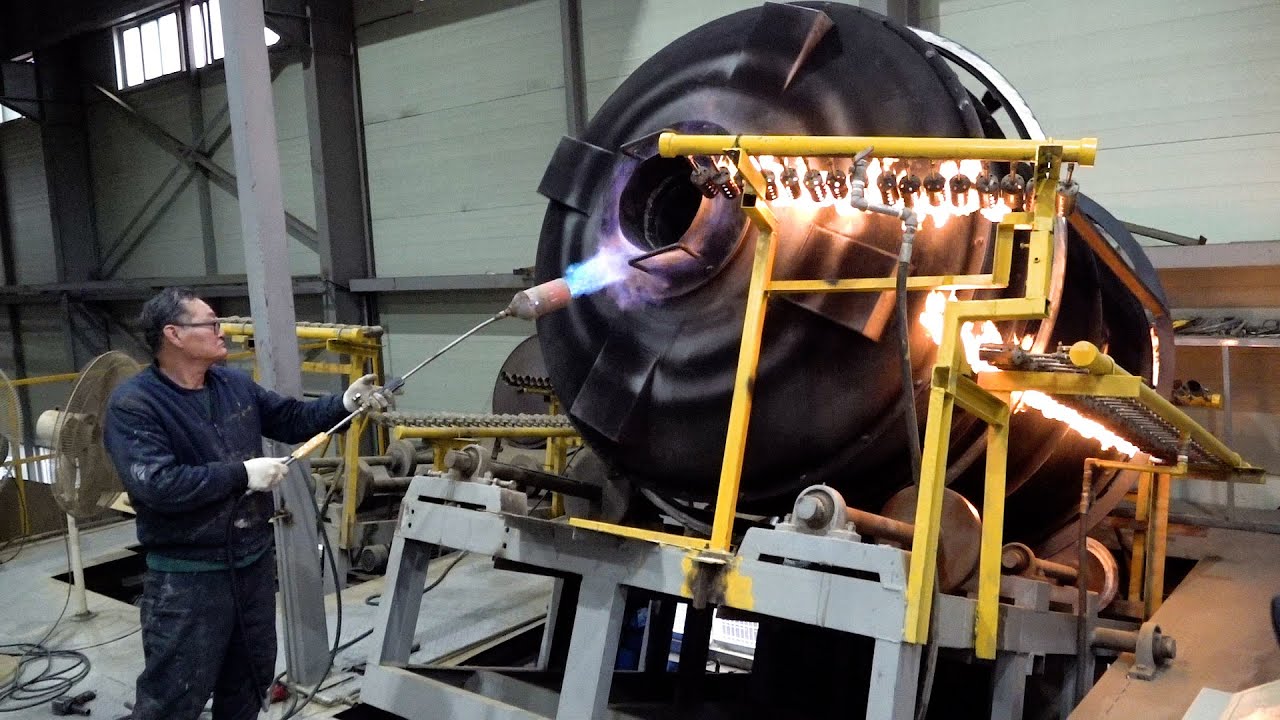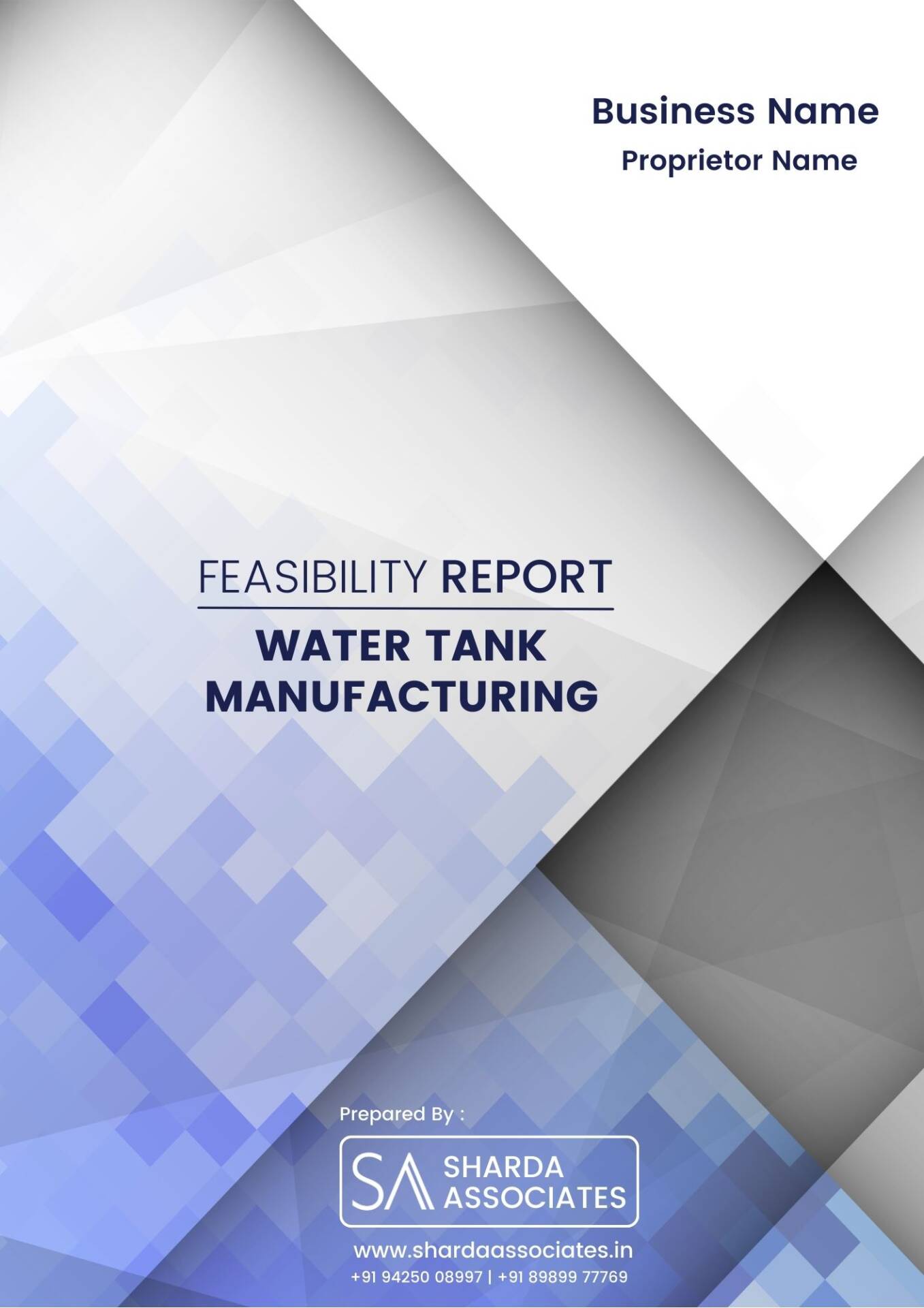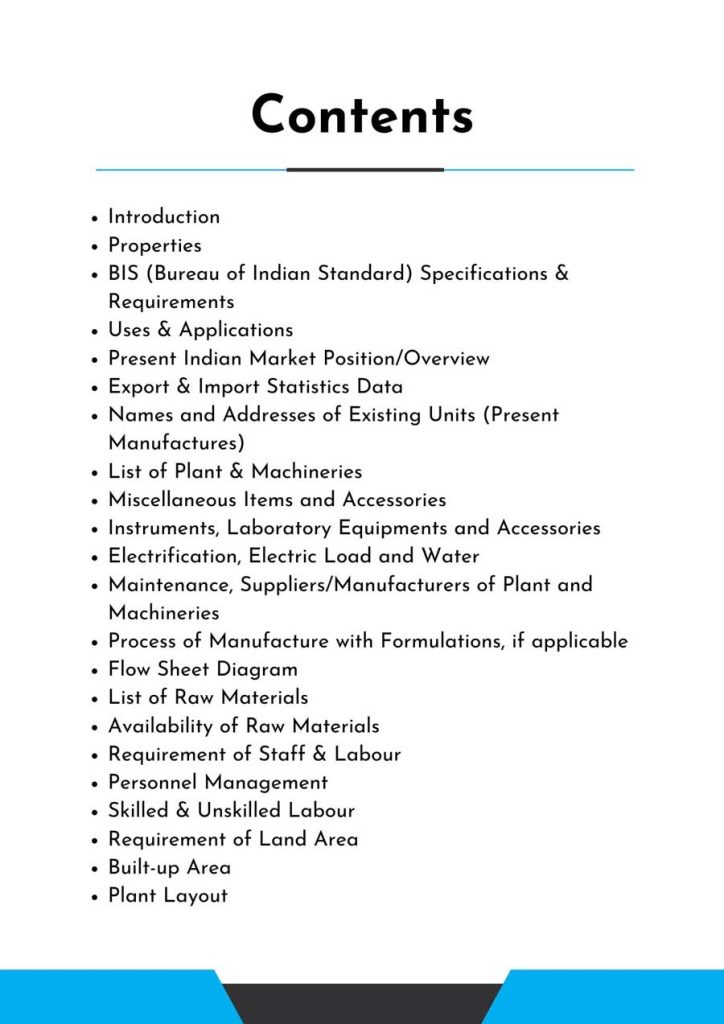Feasibility Report On Water Tank Manufacturing
Water tank manufacturing involves the production of containers designed to store and hold water. These tanks come in various materials, sizes, and configurations to cater to diverse residential, commercial, and industrial needs, ensuring efficient water storage and distribution systems.
Introduction
Feasibility Report For Water Tank Manufacturing.
Water tank manufacture is the process of creating containers that store and hold water. These tanks are necessary for a variety of applications, including residential, commercial, industrial, and agricultural use. The production process is divided into various steps to guarantee that the tanks match quality and safety criteria. The initial phase in water tank production is design and planning. Engineers and designers construct plans and specifications for tanks, taking into account elements such as size, form, capacity, and intended purpose. They also choose materials that are long-lasting, corrosion-resistant, and suitable for storing potable water.
When the design is complete, the manufacture of tank components begins. Steel, fiberglass, polyethylene, and concrete are common materials used for water tanks. Steel tanks are built by welding prefabricated panels together, whereas fiberglass tanks are built by molding composite materials. Polyethylene tanks are normally rotated molded, whereas concrete tanks are poured into pre-made molds. During the fabrication of the tank’s body, different accessories and fittings, such as inlet and outlet pipes, vents, manholes, and drainage systems, must be installed. These elements are necessary for proper water flow and maintenance.


Water tank manufacture relies heavily on quality control. Manufacturers put their tanks through thorough testing to verify that they meet industry requirements and are defect-free. Pressure testing, leak detection, structural integrity evaluations, and chemical resistance examinations are examples of these tests. After passing quality testing, the tanks are extensively cleaned to remove any impurities or pollutants. Proper cleaning is essential to ensure that the tanks can hold potable water.
Finally, protective coats or paints are applied to the tanks to increase their longevity and resilience to external elements such as UV radiation and weathering. The produced water tanks are then carried to their respective places and installed by professionals. Proper installation is critical to avoiding structural difficulties and ensuring the tanks perform successfully and securely.
Feasibility Report Sample On Water Tank Manufacturing



Market Strategy of Water Tank Manufacturing
The market for water tanks was valued at $3,686.1 million in 2019 and is anticipated to increase to $4,736.5 million by 2027, rising at a CAGR of 3.2% between 2021 and 2027.
Water tanks are containers that hold liquid. These are used to store potable water, rain water, irrigation water, construction water, livestock water, inside home water, and other types of water. Water tanks for residential or institutional use are often built of polyethylene, steel, or fiber glass. They come in a variety of shapes and sizes, ranging from 200 to more than 10,000 liters. Because of its ease of availability and installation, the plastic or polyethylene water tank is the most extensively used water tank all over the world. The plastic segment is predicted to maintain its dominant position in terms of revenue generation during the projection period.
The expansion of the water tank market is linked to the increased demand for drinkable water around the world as a result of population growth. A water tank is required in households and institutional applications to maintain a steady supply of water throughout the day. Application of water tanks in fields such as construction, agriculture, and aquaculture has resulted in steady sales of water tanks all over the world, paving the way for the growth of the water tanks business.
However, the issue of water safety in plastic water tanks continues to be a major limitation for the worldwide industry, as most plastic tanks are known to alter the properties of the water they hold. On the contrary, the increased use of water tanks for subterranean water storage for conservation and growing demand for portable water tanks are likely to give chances for global water tank market growth.



